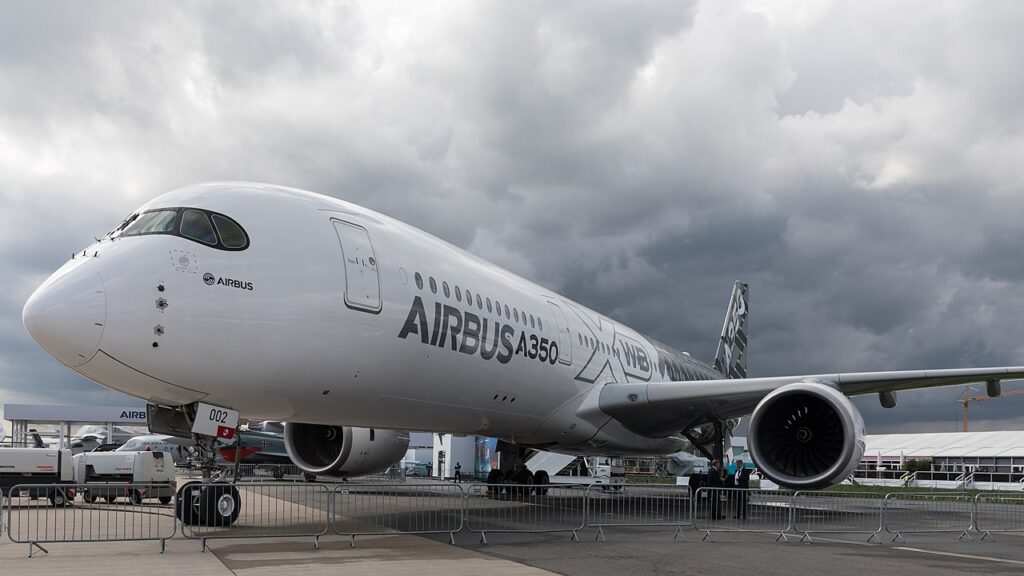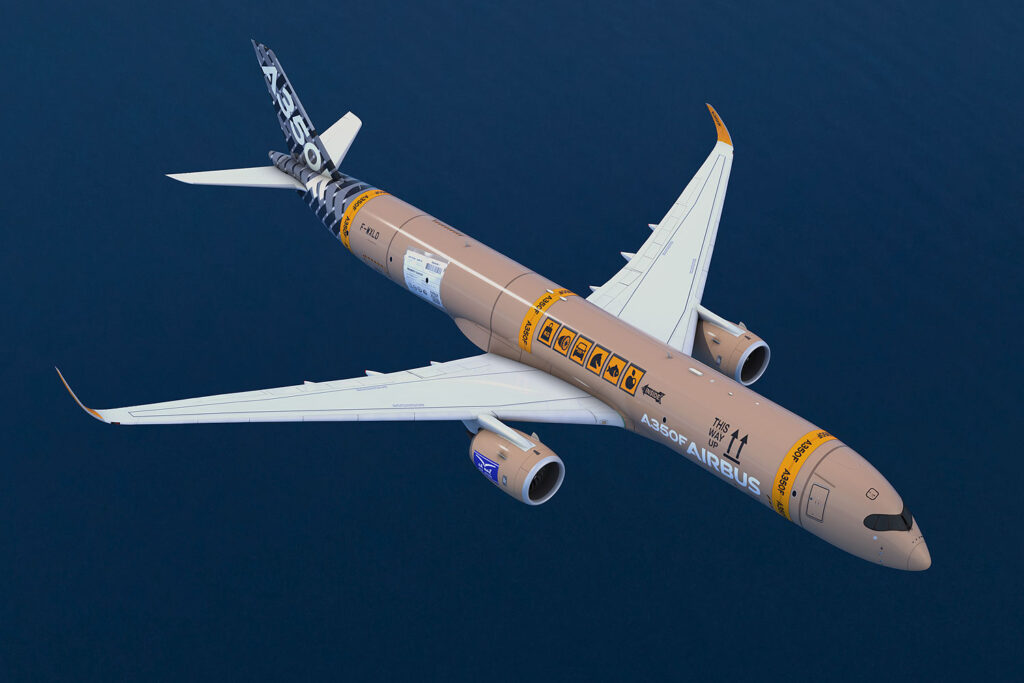FRANCE- Airbus has reported the delivery of the initial components for the upcoming A350 freighter, originating from production facilities in Stade, Bremen, and Varel.
Teams from Airbus Aerostructures and Premium Aerotec (PAI) gathered for what they referred to as the ‘first metal cuts,’ even though actual metal cutting was not involved on every occasion.

Airbus Secures 39 Firm Orders for A350F Since July 2021
Melanie Markgraf, ASA A350F project manager, reflects on the evolution of the A350 aircraft:
“In 2013, I had the privilege of celebrating the inaugural flight of the A350 alongside many colleagues.
A decade later, we are embarking on one of the most significant advancements for this remarkable aircraft. Every day, numerous colleagues are dedicated to taking on exciting and challenging tasks to turn this vision into a reality. As production commences at the Bremen, Stade, and Varel sites, we have taken a major step forward together.”
Introducing the A350F at the Stade plant will notably affect the existing fuselage shell production.
The upper shell, which will feature a substantial portion of the future cargo door cut-out, will require additional CFRP (carbon fiber-reinforced plastic) bonding jigs. The lower shell of the freighter closely resembles that of the A350 passenger version.
For the initial flight and steep take-off tests, the first A350F will be equipped with flight test instrumentation (FTI), necessitating significant reinforcement of the lower shell’s skin laminate.
To accomplish this, three large CFRP doublers were produced at the Stade fuselage shell production facility using a specialized method. During the assembly of the fuselage shell, these doublers will be affixed to the outer skin using over 4,000 additional rivets.
Thomas Meyn, industrial project manager at the Stade site, elaborates on the assembly process:
“Since this process would occupy our automated riveting system for a full week and in order to minimize the impact on the series production process activities, we carried out this assembly work with a small team during the summer break.
The employees on the shop floor and in the support functions were willing to work during the summer break to ensure the start of assembly.

First A350F Component
The dedicated Bremen teams have made significant strides in their work, having successfully industrialized the first component known as the freighter intercostal, which is now poised for delivery.
This particular component plays a pivotal role in the frame structure of the forward cargo door, designed to withstand substantial loads.
It is just one of approximately 1,400 components that will undergo industrialization at the Bremen facility and will eventually be integrated into all ASA workshares.
These components are crucial connectors between the frames, the outer skin, and the system connections. The production of thermoplastic components holds great significance in the assembly of the A350F.
The Centre of Competence, known for its expertise in developing and industrializing complex thermoplastic CFRP components, has once again showcased its proficiency in the freighter project.
This achievement is attributed to the high level of commitment from employees at the Bremen site and the successful implementation of automated and digitized systems.
Norbert Dombrowski, head of ME design consulting, expresses confidence in meeting the challenges posed by the A350F, stating, “The A350F is a great challenge for all those involved, but we will master this one, too.”
The detailed components and subassemblies for section (S) 13/14 will be delivered to the Nordenham plant, where they will be assembled to create a complete section.
For S16/18, the individual shells are sourced from Augsburg and Stade, while the floor structure is produced in Nordenham. Once these components are assembled in Hamburg to form complete sections, they will progress to the system installation stage.

A350: A Cargo Aircraft with Advanced Features
The A350F, built upon the exceptional A350-1000 platform, boasts a fuselage length optimized for cargo operations and features an oversized cargo door on the main deck. More than 70% of the airframe is constructed from advanced materials.
Airbus has successfully reduced the take-off weight by over 30 tonnes for the same mission.
This remarkable achievement results in a substantial advantage, offering at least a 20% reduction in fuel consumption and CO2 emissions compared to competing products.
The A350F excels in payload capacity, accommodating up to 111 tonnes, which is five tonnes more payload and 11% more volume than its competitors.
This versatility allows it to serve a wide range of cargo markets, including express traffic, general cargo, and even outsize loads. In the large freighter category, it will be the first to meet the ICAO CO2 emissions standards for 2028.
Aerostructures manages the development of the forward section, while Airbus Operations handles the engineering responsibilities for the aft section. Both sections are manufactured through close collaboration between Premium Aerotec and Aerostructures.
Components for the forward shells and the main deck cargo floor in both sections originate from the Nordenham facility, with the rear side shells produced in Augsburg and the rear upper and lower shells in Stade.
Varel contributes to the surrounding area of the doors, both for the smaller forward doors and the large main deck cargo door. Section assembly for S16/18, as well as the overall system installation for both sections, takes place at the Hamburg site.
Stay tuned with us. Further, follow us on social media for the latest updates.
Join us on Telegram Group for the Latest Aviation Updates. Subsequently, follow us on Google News.

